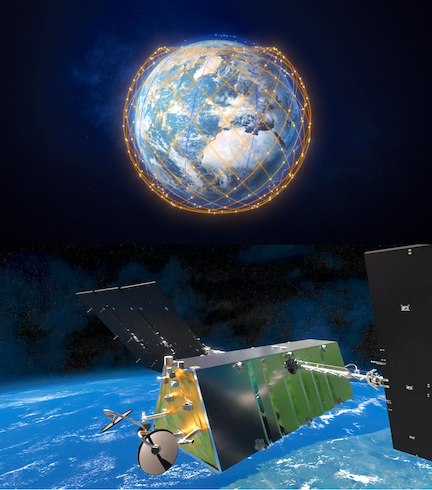
Telesat has selected Thales Alenia Space to build its Low Earth Orbit (LEO) broadband 298-satellite constellation Lightspeed which offers high performing broadband professional services around the world.
Thales Alenia Space (a joint venture between Thales and Leonardo), has signed an agreement with leading global satellite operator Telesat to be the prime contractor on the construction of Lightspeed, its advanced LEO network, a multi-billion dollar project initially comprised of a fleet of 298 satellites. Telesat will rely on Thales Alenia Space not only to provide the space and mission segments, but also to be responsible for the end-to-end network performance and related specifications of the system.
This agreement has been signed in the presence of Bruno Le Maire, Minister of the Economy, Finance and Recovery of France. The first satellites are expected to be ready for launch in two years.
Following the intense work done on Lightspeed’s innovative design, this selection represents a major step in the deployment of the project, as Telesat and Thales Alenia Space significantly increase the momentum of activities to parallel with the finalization of the Lightspeed project’s financial close.
Lightspeed’s space segment will initially be comprised of 298 satellites, in the 700-750 kg class. The network will deliver multiple terabits per second across the globe for secure, low-latency, high-performing broadband professional services.
Lightspeed is built on a unique combination of advanced on-board satellite equipment — sophisticated active antennas that can dynamically refocus beams a thousand times per second, powerful and flexible processors able to address a range of bandwidth, optical laser links between satellites to create a true global mesh coverage of the world — and a mix of on-board and on-ground software ensuring the optimal use of the system resources. The flexibility brought by this system is the key to true competitiveness as it optimizes marketable capacity in relation to the location of demand, which can vary significantly across time and between hot spots such as airports and low-density areas such as remote communities. The optical laser link interconnections between the constellation satellites will provide global, mesh coverage around the world, including above the oceans and poles, with a high level of security for end-to-end services. It will optimize the ground segment with a lower number of gateway sites, more freedom on gateway locations, and the ability to deploy gateways in line with the loading of the system.
“I want to warmly thank Telesat for putting its trust in our company, and we are proud to have been selected after successfully going through a very demanding competitive process,” said Hervé Derrey,
